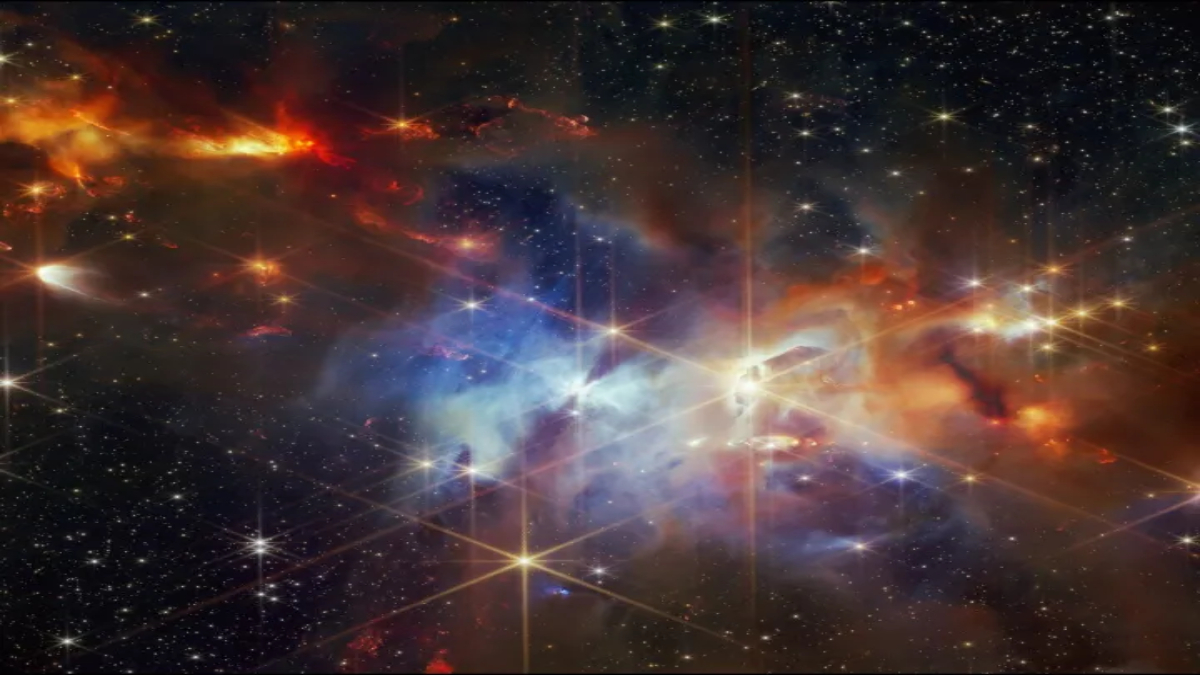The James Webb Space Telescope has captured a breathtaking image of the Serpens Nebula, a dense, star-forming region teeming with new stars emerging amidst clouds of dust and gas. Unlike many nebulae that glow due to radiation from stars, the Serpens Nebula is a reflection nebula, shining only by reflecting light from nearby sources.
This visually stunning image also provides critical insights into a fascinating phenomenon associated with newborn stars. As stars form, they begin as protostars, which emit highly energetic jets of gas from their north and south poles. When these jets collide with surrounding dust and gas, they create shockwaves visible in the top left of the image. The red streaks of molecular hydrogen mark these outflows, and intriguingly, all the jets are aligned at the same angle. This is the first observation of such aligned jets.
Ordinarily, protostars would eject gas in various directions, so the alignment suggests a unique influence within this region. Webb scientists propose that a few forces might align these outflows during the early stages of star formation. One possibility is the presence of binary stars, which orbit each other and wobble, thereby twisting the direction of the jets over time.
To delve deeper into the nature of this region, Webb scientists plan to use the telescope’s NIRSpec instrument to analyze the composition of the cloud, building on the data captured with the NIRCam instrument.
This discovery not only adds a visually striking image to Webb’s portfolio but also offers significant clues about the dynamics of star formation in the Serpens Nebula. By studying these aligned jets, astronomers hope to uncover more about the processes shaping these nascent stars and the environment influencing them.


